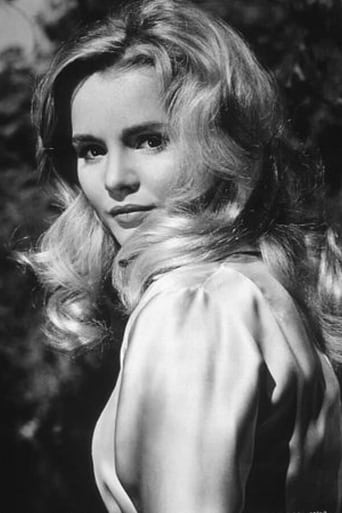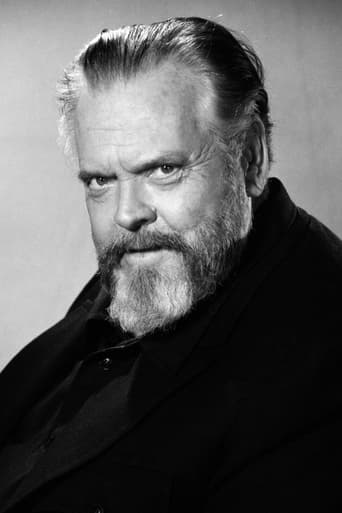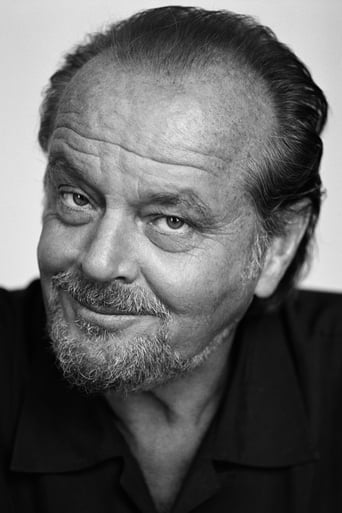

A Safe Place (1971)
Noah, a young woman who lives alone in New York, is dating two very different men, Fred and Mitch, at the same time. However, she realises that neither man can totally fulfil her needs.
Watch Trailer
Cast


Reviews
A strange young woman (Tuesday Weld) lives in a fantasy world where she can never grow up.Henry Jaglom's directorial debut was a "critical and box-office disaster". Time magazine called the film "pretentious and confusing", a film that "suggests that the rumors of his expertise were greatly exaggerated, or at least that it does not extend to directing." Apparently, for the critics, not even the presence of the incredible Orson Welles or Jack Nicholson could save this one.Author Anais Nin was perhaps the most kind. She called the film "an impressionistic film, an X ray of our psychic life, which gives an insight instantly into the secret self." She called it a "masterpiece", and praised it for its dreamlike quality that could only be captured on film.
The son of Simon Jaglom, a wealthy Russian-Jewish financier from London who emigrated to New York just before World War II, Henry Jaglom has always possessed the means and confidence to pursue his own, sometimes highly idiosyncratic visions. His first film as a writer/director, 'A Safe Place', had its first incarnation in the mid-Sixties as a short-run Off Broadway play written by Jaglom and starring a then-unknown Tuesday Weld. Offered a film project by Columbia—through the auspices of 'Easy Rider' cohorts Bert Schneider and Dennis Hopper—Jaglom opted to turn his play into a film. Jaglom quite naturally signed Tuesday Weld to reprise the lead role of Susan/Noah, a young woman caught between two lovers and constantly retreating into her imagination (supposedly a "safe place"), which only seems to produce troubling memories of childhood that ultimately result in her ego dissolution and/or suicide. To complement what would turn out to be a magnetic performance by Weld—who drew on her own tumultuous youth for inspiration—Jaglom secured the services of other talented friends: Jack Nicholson (who plays one of Weld's lovers) and the legendary Orson Welles (who plays a street magician and Weld's titular father figure). Though he had his own play script to provide a blueprint for the film, Jaglom insisted on endless experimentation and improvisation. His cinematographer, Dick Kratina (who helped shoot 'Midnight Cowboy'), eventually shot some fifty hours of raw footage that Pieter Bergema edited down to 94 minutes (a shooting ratio of 32 to 1). In the end, though, 'A Safe Place' would achieve notoriety not for its acting, gritty New York City vistas, its strange soundtrack (combining Gershwin, Edith Piaf, Charles Trenet, and mid-century Tin Pan Alley tunes), or even a hilarious soliloquy by Gwen Welles on New York City mashers but for its copious use of jump cuts between past, present, and future events—a risky editing technique deemed brilliant by some critics and derided as nonsensical and confusing by others. Indeed, when 'A Safe Place' premiered at the 9th Annual New York Film Festival (Oct. 15, 1971), audience members broke into a passionate shouting match over its merits that nearly escalated into a donnybrook. Though it bombed in the United States, 'A Safe Place' predictably fared better in France; a theater in Paris is reputed to have shown it continuously over a seven-year period.
---and this brilliant little gem is proof thereof. Drawing almost equally from the French New Wave as he did Ambrose Bierce's AN OCCURRENCE AT OWL CREEK BRIDGE, Jaglom's "safe place" for Tuesday Weld's character is her own imagination, where her eccentricities can bloom in complete innocence without being impinged upon by the "real world." A gorgeous salad of fragments that collect themselves into a unit of an ethereal base, A SAFE PLACE is the kind of film you would imagine the artists whose drawings graced the pages of the "underground press" art papers (the San Francisco Oracle, for example) would try to make out of their visions. There are also nice parts for the actors Welles -- Orson, happy to perform as a magician in an all-too-rare chance, and Gwen, who is touching and magnetic in her first film role. Both Welleses left us before their time, and A SAFE PLACE provides a beautiful and unique glimpse of each.
This experimental piece of work, from Henry Jaglom, is actually something of a gem, if not for it's unique direction, for the typically stunning performance from Tuesday Weld. Weld is wonderful in her characterization of a simple, juvenile young woman, caught in the limbo between innocence and adulthood. This film is from the period which I consider Weld's peak. She is beautiful, charming and completely earnest in her delivery.Others in the cast are interesting at best. Orson Welles is good as the father figure in Weld's life. Philip Proctor is not much acting wise, but at least he has a pleasant voice. That seems to have helped his career in the years following this film. Jack Nicholson is his typical cocky, slimy character in this one. I didn't feel his acting was anything new here, but his presence makes for an interesting triangle relationship.The editing is choppy, utilizing audio and image clips flashing by, altered, and repeated again. It would seem to get old after a while, and it does to some degree, but it's effective nonetheless. There are some good vignettes here and there throughout the film, namely a scene where Weld describes to Proctor the importance of telephone exchanges. Not every actress could pull this off well, but Weld does so with empathy and charm...brilliant! The Ouija board scene also stands out, as do the ones of Weld and Welles in Central Park Zoo.A fascinating and surprisingly engaging film. If for no other reason, it's worth watching for Weld's performance.




